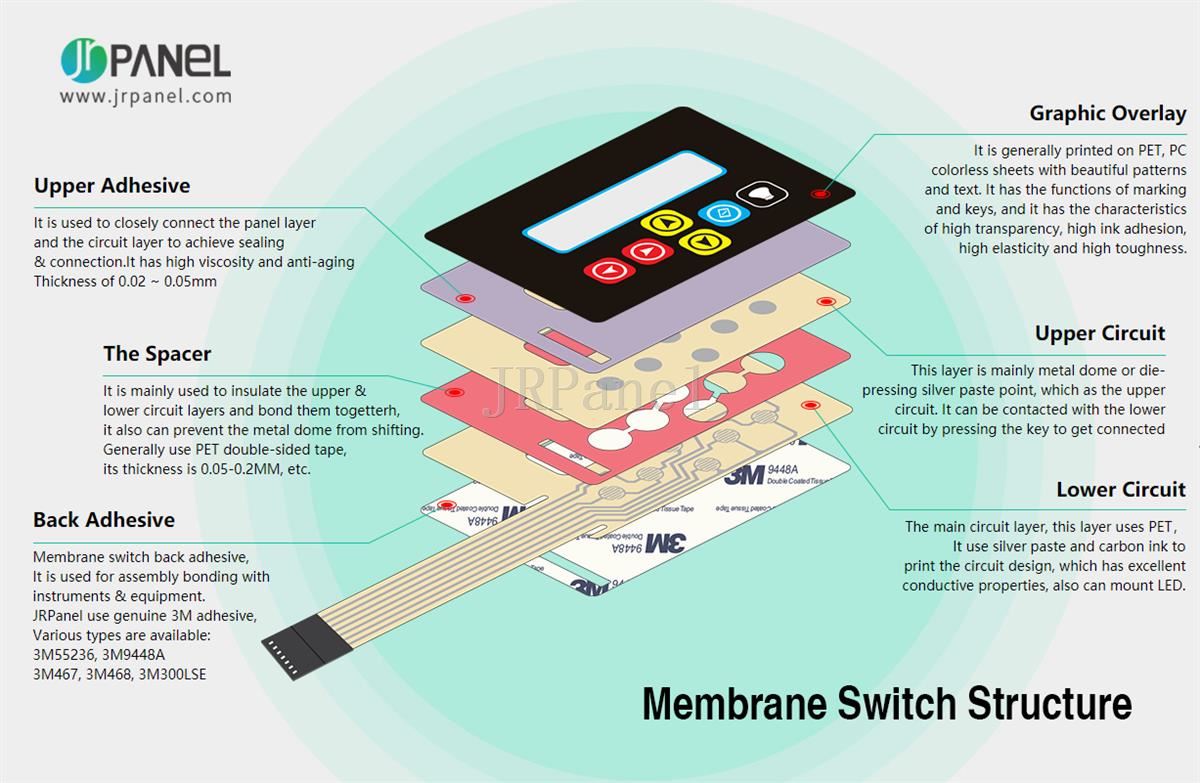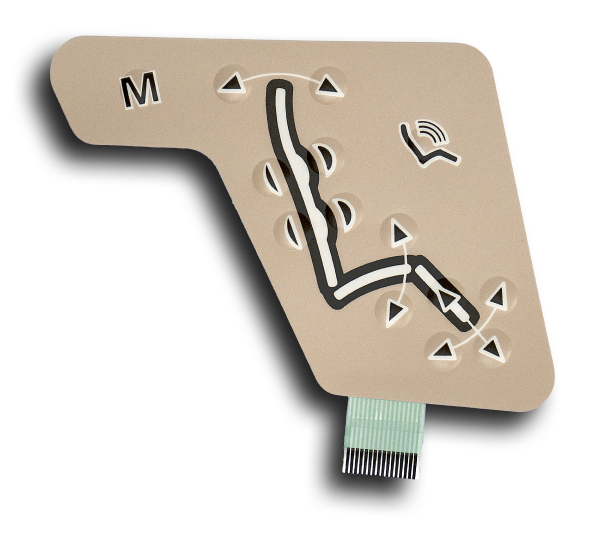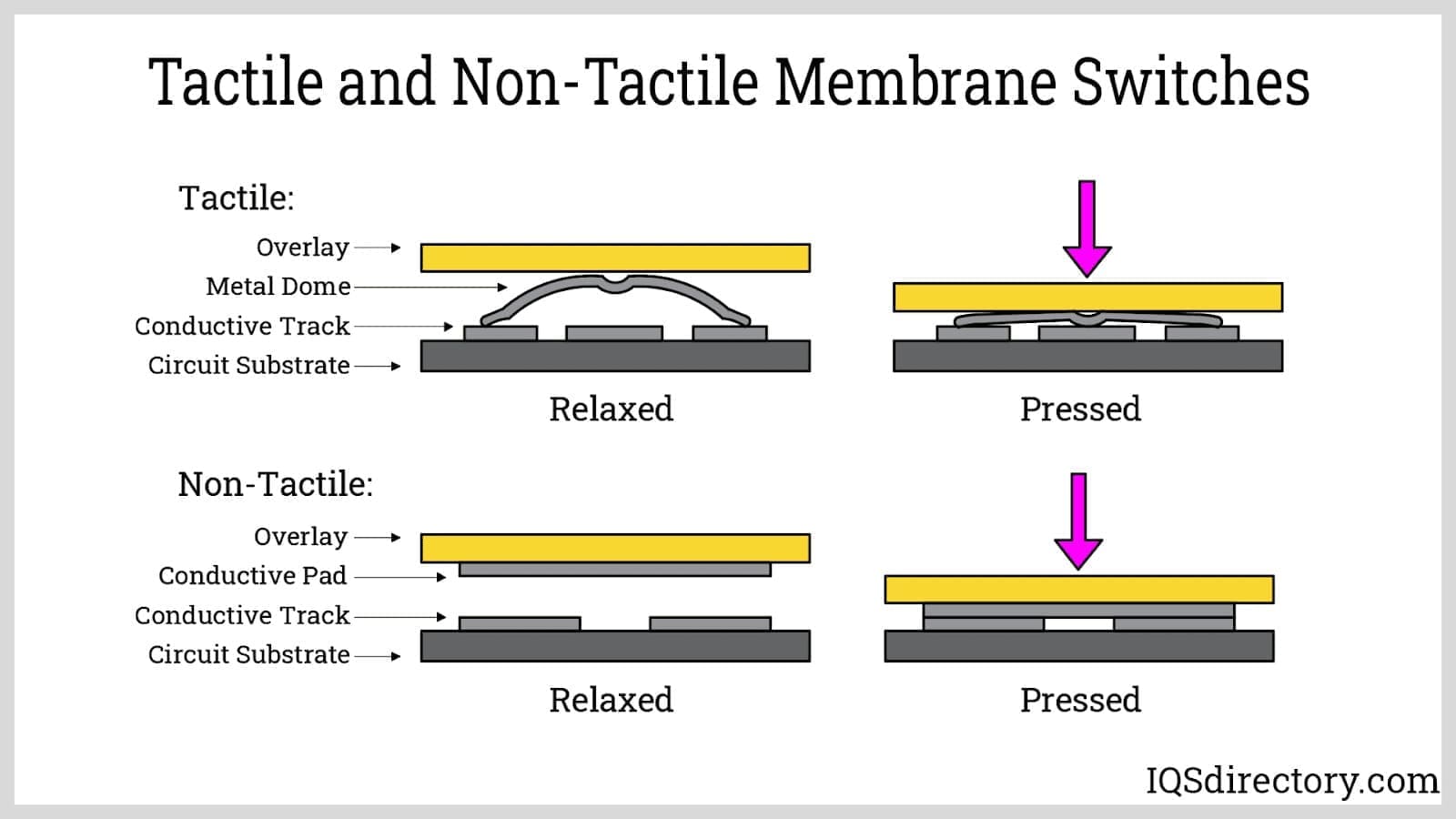The Manufacturing Process Behind Membrane Switch Over: What You Need to Know
The manufacturing procedure behind membrane switches combines mindful style, material option, and quality control. It starts with recognizing the details of membrane layer switch layout and advances through different stages, consisting of material choices and printing methods. Each phase plays an essential function in ensuring capability and sturdiness. The complexities of layer building and the extensive testing standards might expose understandings that are not instantly noticeable. What lies past these fundamental aspects?
Understanding Membrane Change Design
Membrane layer buttons might show up basic at very first glimpse, their layout entails complex considerations that ensure performance and toughness. The layout process starts with a thorough understanding of user demands, consisting of the interface's intended application and environmental aspects. Comfort designs is a vital component, as the design should help with simplicity of usage while ensuring that responsive feedback satisfies individual expectations.Moreover, the layering of parts, such as visuals overlays, adhesive layers, and conductive traces, need to be precisely crafted. membrane switch. This layered arrangement not just affects the switch's responsiveness yet additionally influences its durability. Interest is offered to the sealing methods employed to shield against dampness and dirt, which could jeopardize performance. Furthermore, layout factors to consider encompass appearances, where color systems and visual clearness enhance customer experience. Ultimately, the layout of membrane changes balances functionality, individual experience, and sturdiness, guaranteeing that they fulfill the needs of various applications properly
Products Used in Membrane Switch Manufacturing
When selecting products for membrane layer switch manufacturing, it is necessary to contemplate both efficiency and durability. The key materials consist of polyester and polycarbonate films, which supply versatility and stamina. These movies are usually covered with sticky to ensure appropriate bonding to substratums. Conductive inks, typically made up of silver or carbon, are important for creating electric links within the switch, permitting dependable operation.Additionally, a safety layer, such as a tough layer, is regularly put on enhance scratch resistance and longevity. The choice of backing product, such as acrylic or foam, can substantially influence the button's responsive feel and overall user experience. Different ecological elements, including temperature level and humidity, ought to lead product selection to assure peak performance in specific applications. Ultimately, the ideal combination of products adds to the membrane button's functionality and life expectancy, making educated options important for suppliers.
The Printing Process: Creating Video and Text
The printing procedure in membrane layer switch manufacturing plays a significant duty in producing high-quality graphics and text. Numerous visuals design methods are used to ensure aesthetic appeal and performance, while mindful ink selection approaches are essential for sturdiness and performance. Recognizing these aspects is essential for achieving ideal lead to membrane button design.
Graphic Layout Techniques
Graphic layout methods play a necessary duty in the printing procedure of membrane layer switches, as they specify exactly how graphics and text will ultimately show up on the end product. Efficient graphic design involves the critical use of colors, formats, and fonts to enhance readability and visual charm. Designers often utilize vector graphics for scalability, making certain that pictures remain sharp at numerous dimensions. In addition, interest to contrast and placement is crucial, as it affects user communication and visual top quality. The incorporation of branding elements, such as logo designs, have to be handled with like keep brand honesty. On the whole, thoughtful graphic design strategies contribute substantially to the functionality and beauty of membrane layer buttons, affecting user experience and product performance.
Ink Selection Techniques
Selecting the appropriate ink is crucial for attaining the desired aesthetic quality and durability in membrane layer button manufacturing. Various ink kinds are utilized, including solvent-based, water-based, and UV-curable inks. Each type offers unique features, such as adhesion, adaptability, and resistance to ecological variables. Solvent-based inks are usually preferred for their toughness and lively shades, while water-based inks are extra ecologically friendly yet might have restrictions in bond. UV-curable inks supply rapid healing and robust performance. Furthermore, shade matching methods assure that the selected inks line up with layout specs. Inevitably, the selection of ink should take into consideration aspects such as application approach, substrate compatibility, and end-use demands to attain premium lead to membrane switch graphics and text.
Layer Building And Construction and Setting Up

Product Option Refine
A mindful option of products is crucial in the production process of membrane layer buttons, as it straight affects functionality and sturdiness. The key products used consist of polyester, polycarbonate, and various conductive inks. Polyester is typically preferred for its outstanding resistance to chemicals and abrasion, making it ideal for extreme environments. Polycarbonate, on the various other hand, provides remarkable quality and effect resistance, which is beneficial for applications requiring presence and effectiveness. Conductive inks, normally made up of silver or carbon, are vital for developing reputable electrical paths. Additionally, the choice of sticky products influences the general honesty of the button - membrane switch. Assessing aspects such as ecological direct exposure, tactile responses, and visual requirements guides manufacturers in picking the best products for their certain address applications
Layer Attachment Methods
Adhering layers in membrane switch building and construction is an essential procedure that guarantees performance and long life. Different adhesion techniques are used to secure ideal bonding in between layers, which usually include using adhesives, warmth, and stress. Pressure-sensitive adhesives (PSAs) are generally utilized for their convenience of application and immediate bonding capacities. Additionally, additional reading thermal bonding techniques can be used, where heat is used to turn on adhesive homes, protecting a solid bond. The option of attachment approach greatly relies on the materials included and the particular application requirements of the membrane layer button. Proper positioning and consistent application of adhesives are necessary to avoid flaws, safeguarding the switch operates effectively throughout its intended life-span.
High Quality Control Measures
Ensuring quality assurance throughout the layer construction and setting up of membrane layer switches is crucial for maintaining efficiency and reliability. This procedure generally entails numerous important measures, consisting of comprehensive examinations at each phase of production. Producers make use of advanced screening methods, such as peel examinations and bond assessments, to validate the stability of layer bonds. In addition, visual inspections are carried out to recognize any kind of flaws in printing or material incongruities. Ecological problems, such as temperature level and humidity, are thoroughly checked to guarantee ideal treating and bond. In addition, regular calibration of equipment aids keep specific production requirements. By executing these top quality control steps, suppliers can significantly minimize the danger of product failure, assuring that the final membrane layer switches over fulfill the needed specs and client expectations.
Checking and Quality Control Measures

Innovations in Membrane Layer Change Modern Technology
As improvements in technology continue to develop, membrane buttons are gaining from ingenious growths that enhance their capability and user experience. One remarkable development is the integration of capacitive touch modern technology, which permits for more receptive and user-friendly customer look these up interfaces. This shift not just boosts aesthetic appeals yet additionally lowers mechanical damage, extending the life-span of the switches.Additionally, innovations in visuals overlay materials have actually led to boosted sturdiness and resistance to ecological aspects such as moisture and UV light. These materials currently use boosted quality and brightness, further boosting the aesthetic appeal.Furthermore, the consolidation of wise innovation is changing membrane layer switches right into interactive control panels, making it possible for connectivity with IoT gadgets. This connectivity fosters a smooth customer experience, leading the way for applications in different sectors, from health care to consumer electronics. Collectively, these developments position membrane switches over as crucial components in modern device layout.
Frequently Asked Questions
For how long Does the Membrane Change Manufacturing Refine Take?
The period of the membrane button manufacturing process can differ considerably. Elements such as complexity, products used, and manufacturing quantity impact timelines, with normal production varying from a few days to numerous weeks for completion.
What Are the Common Applications for Membrane Switches?
Membrane layer buttons are generally used in different markets, including auto controls, family appliances, medical tools, and consumer electronic devices (membrane switch). Their adaptability and sturdiness make them optimal for applications calling for user-friendly interfaces and dependable performance in diverse environments
Can Membrane Switches Over Be Customized for Details Requirements?

What Is the Life-span of a Regular Membrane Layer Switch?
The lifespan of a normal membrane switch varies, but normally, it ranges from 1 to 5 million cycles. Aspects such as use, setting, and worldly high quality considerably affect durability and overall performance in time.

Are Membrane Switches Over Eco Friendly?
The environmental kindness of membrane layer changes differs. Some products used might not be recyclable, while others can be eco-friendly. The total influence depends on manufacturing products and methods, necessitating mindful consideration throughout option and disposal. The production process behind membrane layer switches combines cautious style, material choice, and high quality control. It starts with understanding the ins and outs of membrane button style and proceeds with various phases, including material selections and printing techniques. When picking products for membrane button production, it is vital to ponder both efficiency and toughness. A cautious choice of products is vital in the production procedure of membrane layer buttons, as it straight affects performance and sturdiness. The option of attachment technique mainly depends on the products included and the details application needs of the membrane layer button.